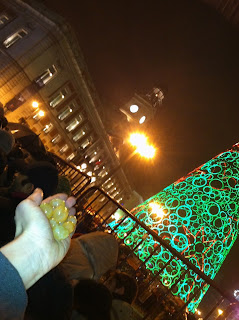July 27, 2010 - Longji Old Village, Guangxi, China
"Learn from the masses, and then teach them."
~Mao Zedong
Modern China is built on factories and workers. Increasingly, young men and women leave their rural villages, move to the factory towns to help subsidize family earnings, and often lose connection to their cultural heritage. Through traveling in Yunnan and Guangxi, I've visited a number of government established tourist villages, some within autonomous regions, where multi-generation families are able to maintain their historical way of life through high tourist dollars. Indigenous people (mostly women) wear their traditional garments, but carry knock-off designer bags, and hassle travelers to visit their homes - where they feed and house foreigners for additional income. I'm still wrapping my head around this. Are westerners exploiting the indigenous people by traveling here in hopes of observing unconventional traditions? Is the Chinese government exploiting the native people to make money? Or are they preserving land and life-ways? After having a 4-foot-tall Yao woman following and yelling at me for thirty minutes to eat lunch at her house, I wonder, are the cultural groups choosing capitalism to exploit visitors with little regard for their ancestry? None of it feels genuine.
The Guangxi Zhuang Autonomous Region draws in national international visitors to hike picturesque terraced fields and observe the indigenous Yao minority people work the rice fields. Just having the opportunity to hike limitlessly through mountains while breathing fresh air is an anomaly in China. The Yao ethnic minority group are originally from southern china, but can also be found in Thailand, Vietnam, and Laos. Traditionally, the Yao are Buddhist, but some are now converted Christians. They build their wooden, stilt homes on the steepest terrain, thus maximizing optimal farmland. The Yao women are famous for growing their hair long and only cutting it twice in a lifetime - once when turning 18 and then again when getting married. Women usually roll their long hair into a bun over the forehead and then cover their heads with red or black scarves. However, it's the bright colors worn that most distinguish these people - I mostly observed women in hot pink t-shirts. Surprisingly, numerous elderly women cover their heads with flowery cotton bath towels, instead of the traditional linens.
Although these tiny Yao women are the indigenous people of this region, they hunted, stalked, and ruthlessly pestered me as I hiked for hours from Longji's Seven Stars With the Moon Lookout to the Xhongliu Village and back again. The objective - sell water, juice, postcards, and umbrellas to myself and other tourists. They were also willing to receive payment to unroll their longhair, offered to carry backpacks, and endlessly attempted to force their guide services on me.
The Guangxi Zhuang Autonomous Region draws in national international visitors to hike picturesque terraced fields and observe the indigenous Yao minority people work the rice fields. Just having the opportunity to hike limitlessly through mountains while breathing fresh air is an anomaly in China. The Yao ethnic minority group are originally from southern china, but can also be found in Thailand, Vietnam, and Laos. Traditionally, the Yao are Buddhist, but some are now converted Christians. They build their wooden, stilt homes on the steepest terrain, thus maximizing optimal farmland. The Yao women are famous for growing their hair long and only cutting it twice in a lifetime - once when turning 18 and then again when getting married. Women usually roll their long hair into a bun over the forehead and then cover their heads with red or black scarves. However, it's the bright colors worn that most distinguish these people - I mostly observed women in hot pink t-shirts. Surprisingly, numerous elderly women cover their heads with flowery cotton bath towels, instead of the traditional linens.
Although these tiny Yao women are the indigenous people of this region, they hunted, stalked, and ruthlessly pestered me as I hiked for hours from Longji's Seven Stars With the Moon Lookout to the Xhongliu Village and back again. The objective - sell water, juice, postcards, and umbrellas to myself and other tourists. They were also willing to receive payment to unroll their longhair, offered to carry backpacks, and endlessly attempted to force their guide services on me.




